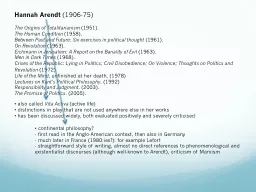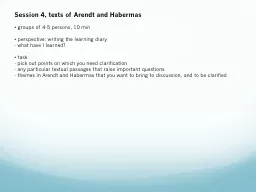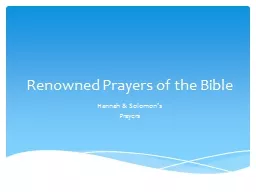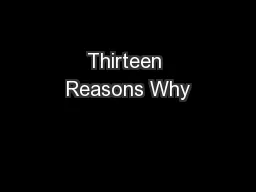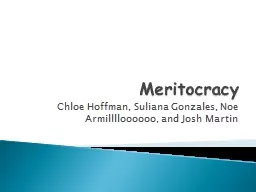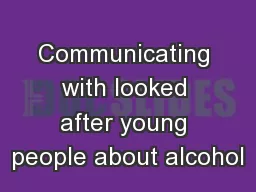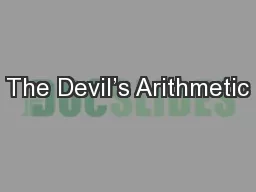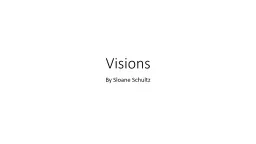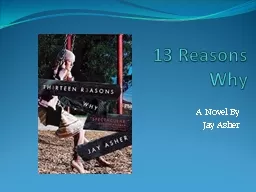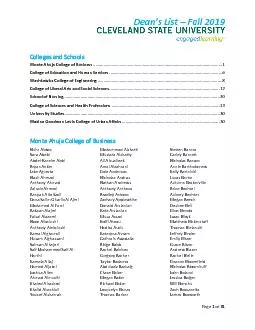PPT-Hannah Arendt
Author : karlyn-bohler | Published Date : 2016-03-06
190675 The Origins of Totalitarianism 1951 The Human Condition 1958 Between Past and Future Six exercises in political thought 1961 On Revolution 1963 Eichmann
Presentation Embed Code
Download Presentation
Download Presentation The PPT/PDF document "Hannah Arendt" is the property of its rightful owner. Permission is granted to download and print the materials on this website for personal, non-commercial use only, and to display it on your personal computer provided you do not modify the materials and that you retain all copyright notices contained in the materials. By downloading content from our website, you accept the terms of this agreement.
Hannah Arendt: Transcript
Download Rules Of Document
"Hannah Arendt"The content belongs to its owner. You may download and print it for personal use, without modification, and keep all copyright notices. By downloading, you agree to these terms.
Related Documents

